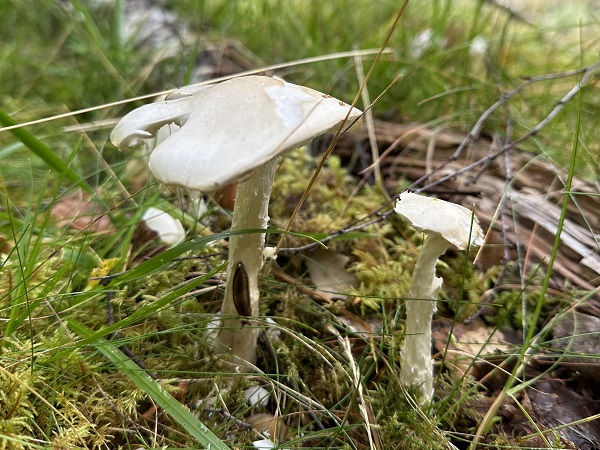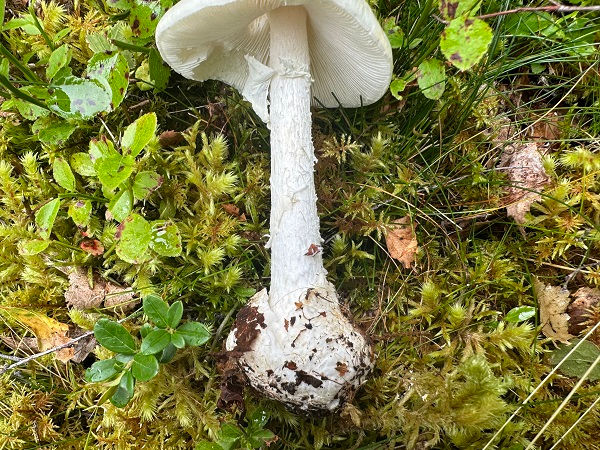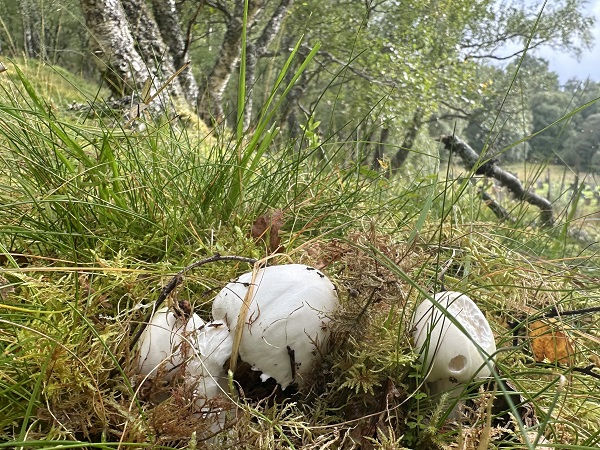Destroying angel - Amanita virosa
- The Foraging Course Company
- Jun 21
- 2 min read
Updated: Jun 24

Deadly poisonous mushroom - intermediate identification Season - summer to autumn Common names Deathcap, death cap, death cup, green deathcap, deathcap Amanita, deadly Amanita, stinking Amanita
Scientific name meaning: Amanita originates from the Greek Amanitai, which is though to mean of the Amanus, which is a range of mountains in Turkey. Virosa is from the Latin virosus, meaning poison
Overall structure and growth  The young destroying angel is contained within an egg-like universal veil or volva, which it bursts out through. It finally becomes a cap and stem mushroom with the remains of the volva at the stem base. It can appear as lone specimens through to large groups. |
Cap  The white cap can reach 4 to 10 cm and is convex to conical. It is smooth but sticky to slightly slimy when wet. |
Gills and spores  The gills are white, crowded and free of the stem The spore colour is white. |
Stem  The stem is white in colour, the stem is 5 to 15cm tall and 1 to 2cm wide. It has a ragged surface and a fragile thin, white ring. It retains a large floppy volval sack at its swollen base. |
Flesh and smell  The flesh is white and the smell is sickly sweet and honey-like. This mushroom is deadly poisonous so should not be tasted. |
Possible lookalikes  Could be confused with other Amanita, such as the false deathcap (Amanita citrina/mappa), pictured. However, it smells of raw potato and has a swollen guttered stem base, rather than a floppy volval sack. Also, the white death cap variant (Amanita phalloides var alba) which is also deadly poisonous, and the white dapperling (Leucoagaricus leucothites) but this lacks a volva. |
Poisonous parts All parts of this mushroom are deadly poisonous. Contains several toxins including amatoxins and phallotoxins. Phallotoxins cause severe food poisoning-like symptoms. The amatoxins, in particular, alpha-amanitin, inhibit RNA polymerase II, an enzyme needed for messenger RNA synthesis, and therefore halts protein synthesis. This leads to liver and kidney failure Hazards This mushroom is deadly poisonous do not consume
Use in herbal medicine and medicine Has shown some activity against the bacteria Pseudomonas aeruginosa and Staphylococcus aureus in vitro, as well as some inhibition of the blot clotting enzyme thrombin. This mushroom is deadly poisonous and should not be consumed
If you are suffering from any ailment or need medical advice, please see your General Practitioner Other uses None known Importance to other species Slugs and snails often eat this mushroom
Always stay safe when foraging. You need to be 100% sure of your identification, 100% sure that your foraged item is edible, and 100% sure that you are not allergic to it (it is good practice to always try a small amount of any new food you are consuming). If in doubt, leave it out!










Comments